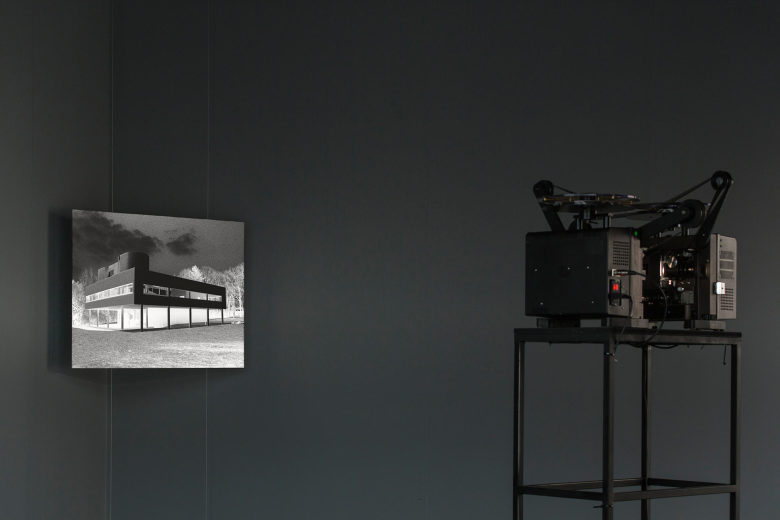
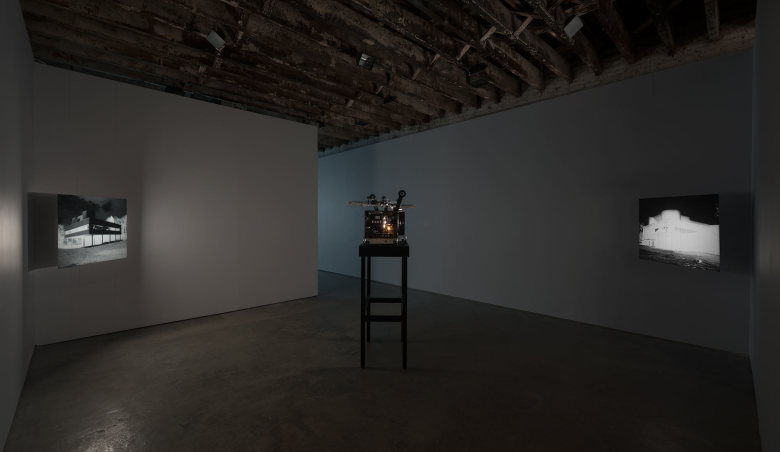
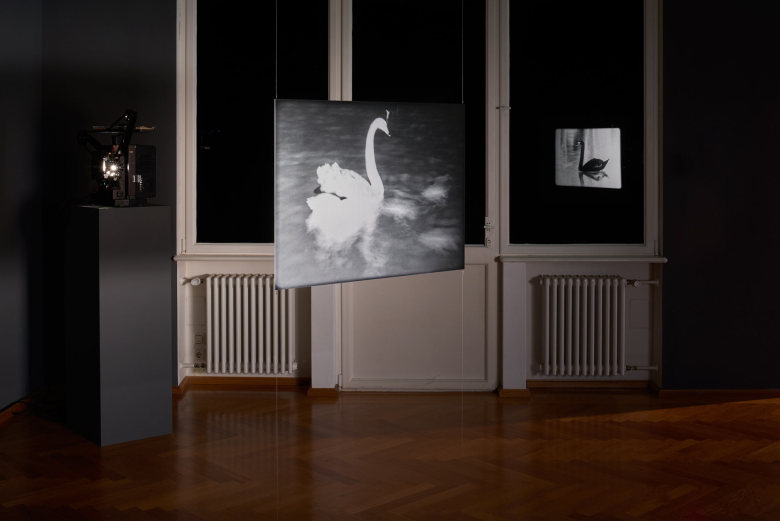

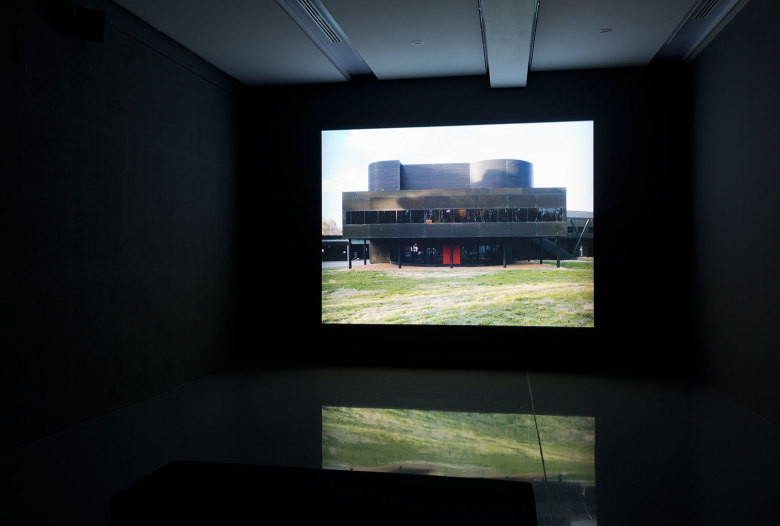
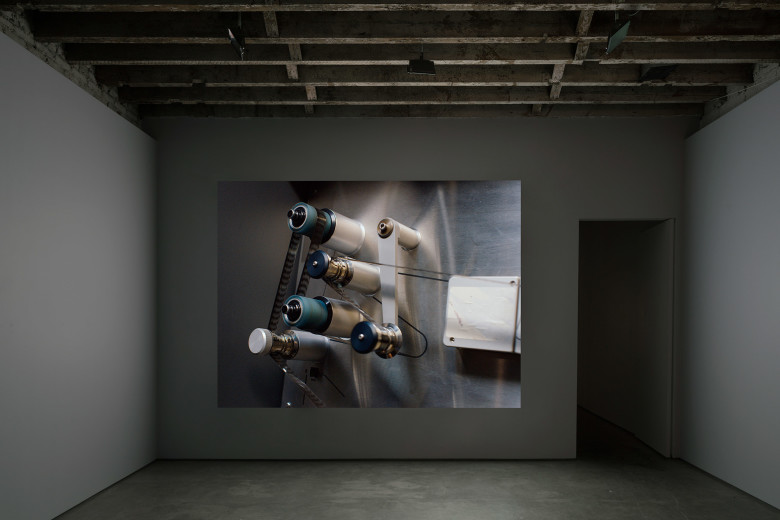

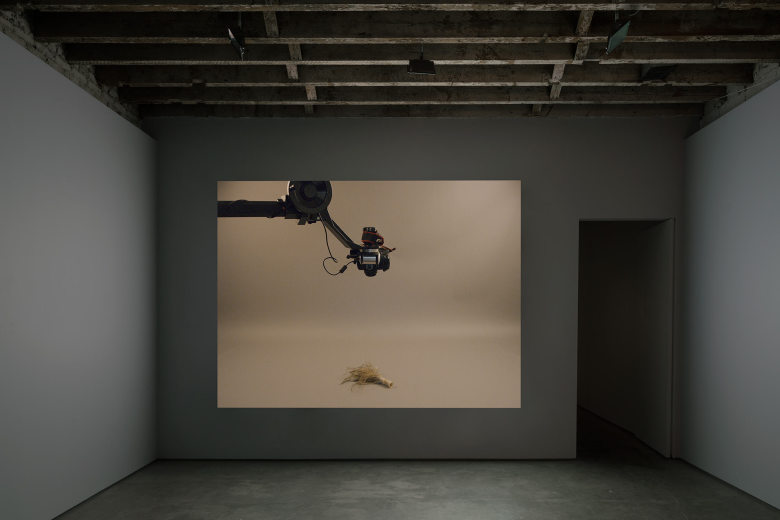
HD colour video: 17 min
Double Negative proposes ruptures between original and remake, artefact and copy, collection and preservation. Two silent, black and white 16mm films simultaneously project images of Le Corbusier’s iconic white Villa Savoye outside Paris, and its doppelgänger, a black copy of the building in Canberra, Australia. Each film follows an identical shot choreography, yet each has been printed on 16mm stock as a negative image, or “polarity print”, thus reversing light and dark. The 16mm films also present a pairing of swans—black swans are indigenous to Australia—from each hemisphere, also in negative.
An adjacent HD color video projection depicts a series of French landscapes—white chalk cliffs and stormy ocean, calm countryside, a river, a forest, then the white Villa Savoye outside Paris. The video then cuts to the same series of landscape shots, but this time in Australia—red cliffs and aqua ocean, arid landscape, a river gorge… then the black Villa Savoye. Yet when the camera moves inside the Australian building copy, an entirely different space is revealed.
The Antipodean black Villa Savoye building copy is the Australian Institute for Aboriginal and Torres Strait Islander Studies—an ethnographic institute dedicated now to the digital duplication of its extensive collections of anthropological films, photographs, slides, sound recordings and indigenous cultural artifacts. Moving through the building’s interior spaces, the video, itself adopting a quasi ethnographic mode, observes the archival efforts of the archivists within this high-end technological environment. The work enacts the infinite loop of recorded artifacts—the once urgent compulsion to document and record ‘vanishing’ rituals and cultural practices becomes instead the contemporary archival impulse to copy vanishing media formats to digital. The video folds back in on the entire Double Negative project, bringing into focus practices of observation, image-making, transfer, collection and renderings of ‘otherness.’
